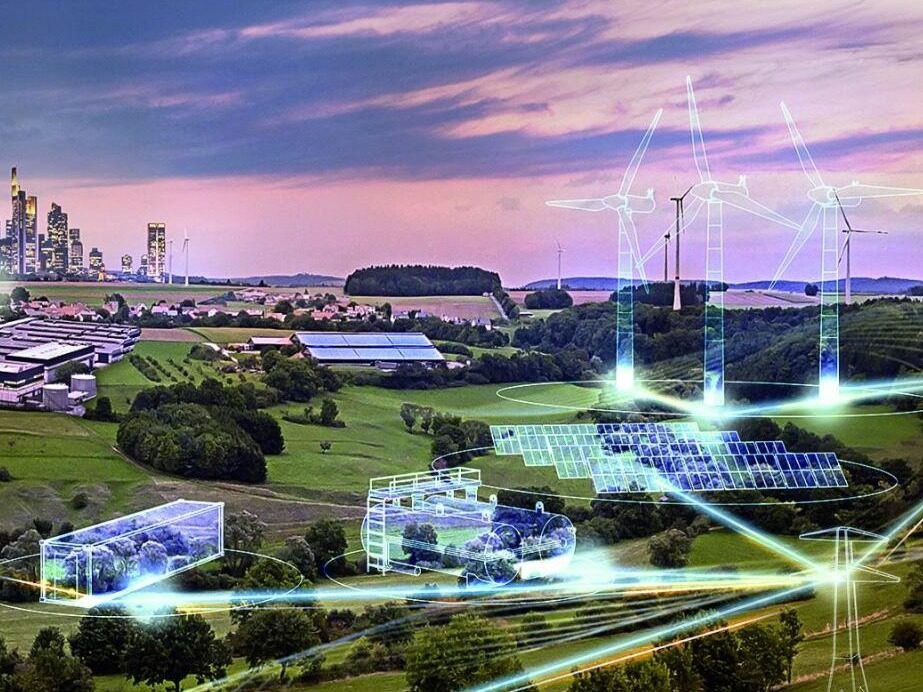
- Building a global energy Internet is a preferred solution for achieving carbon neutrality and sustainable development
To solve the problem of global warming, building a global energy Internet is a preferred solution. The Global Energy Internet provides a path for the global realization of carbon neutrality and sustainable human development.
The sustainable development of mankind faces severe challenges
Espinosa, Executive Secretary of the Secretariat of the United Nations Framework Convention on Climate Change, believes that substantially increasing the use of renewable energy to achieve decarbonization of the energy sector is essential to achieving the goals of the Paris Agreement. Clean energy power generation, advanced power transmission technology, and grid interconnection play an important role in the energy transition process. Only by combining the three can the world accelerate the transition to a low-carbon economy.
Data from the United Nations, the World Health Organization and other institutions show that currently global fossil energy accounts for more than 80% of primary energy consumption; since the industrial revolution, the total amount of carbon dioxide produced by the combustion of fossil energy has reached 2.2 trillion tons, accounting for more than 70% of total greenhouse gas emissions. , Is the most important cause of global temperature rise. In addition, nearly 800 million people around the world do not have access to electricity, and 3 billion people can only rely on fuelwood, coal, and animal dung for cooking and heating. Severe power shortage has prevented some countries from developing industries, and their economic development has been low, which has exacerbated social poverty.
To solve these global problems and realize the sustainable development of mankind, we must start with the fundamental issue of energy. Liu Zhenya, chairman of the Global Energy Internet Development Cooperation Organization, believes that the core of sustainable development is clean development. The construction of the global energy Internet will help to break the development path dependence of mainly fossil energy and partial local balance, and accelerate the replacement of clean and electric energy.
China Exploration
The Paris Agreement requires countries around the world to strengthen their global response to the threat of climate change, keep the global average temperature within 2 degrees Celsius from the pre-industrial level, and make efforts to control the global temperature rise within 1.5 degrees Celsius. Achieve the peak of greenhouse gas emissions as soon as possible, and achieve net zero emissions of greenhouse gases in the second half of this century.
my country proposes to achieve a carbon peak by 2030 and a solemn commitment to achieve carbon neutrality by 2060. This is a major strategic decision made by China based on the internal requirements of promoting the building of a community with a shared future for mankind and achieving sustainable development. The determination of global energy sustainable development, coping with the challenges of climate change, and building a clean and beautiful world.
Xie Zhenhua, China's special envoy for climate change affairs, believes that the carbon emissions issue is essentially an energy issue. At present, my country's fossil energy accounts for 85% of primary energy consumption, and the carbon emissions generated account for 87% of the total carbon emissions of the whole society. The most important task to achieve the goal of carbon peak and carbon neutrality is to realize the green and low-carbon transformation of the energy system. The construction of the Energy Internet is an important measure to accelerate the deep decarbonization of the energy system.
In recent years, China has made concerted efforts in energy production, consumption, and allocation, and China's energy Internet has achieved a comprehensive breakthrough. In the production process, the installed capacity of hydropower, wind power, and solar power reached 370 million, 280 million, and 250 million kilowatts, respectively, ranking first in the world.
In the consumption link, through active promotion of electric vehicles, electric heating, electric boilers, electric drainage and irrigation, port shore power and other measures, clean and efficient electric energy replaces fossil energy consumption such as scattered coal and oil. The proportion of electric energy in terminal energy consumption has increased from 2000 The 11% of China’s foreign investment will increase to 27% in 2020, which is higher than the global average in proportion and growth rate.
In the configuration link, through vigorously promoting the construction of UHV power grids, energy allocation capabilities have been greatly improved. At present, my country is building the world’s largest UHV AC/DC hybrid power grid. A total of 30 UHV projects have been put into operation, with a cross-regional transmission capacity of 140 million kilowatts, an annual replacement of 800 million tons of electric coal, and a reduction of 1.5 billion tons of carbon dioxide. 8 million tons of air pollutants have become a major energy channel for China's west-to-east power transmission and north-south power supply, providing a strong guarantee for my country's energy transition, economic and social development, and ecological civilization construction.
In the future, accelerating the construction of China’s Energy Internet will promote the decoupling of energy development from carbon, and the decoupling of economic development from carbon emissions, to achieve emission reduction targets at a lower cost and at a faster speed, and to provide safe, clean, efficient and sustainable development for China Energy security.
Zhai Panmao, deputy dean of the Chinese Academy of Meteorological Sciences, said that as a large platform, the Energy Internet, building such a bridge from energy production to energy consumption, is a very important measure to promote the clean and low-carbon energy of the future. The most critical link to be caught.
Chao Qingchen, deputy director of the National Climate Center, said that the Internet of Energy provides a good solution for the clean development of the entire social system in the future, and also provides an important way for the energy system to develop towards green and low-carbon development.
The Belt and Road Initiative provides new opportunities
Asia and Africa are the main areas for the development of the Belt and Road Initiative. These two continents have large populations and rapid economic growth. Faced with the problem of energy scarcity and weak infrastructure, electricity consumption in Asia and Africa is expected to increase twice and five times compared with the current level in 2050, reaching 40 trillion kilowatt-hours. By 2050, it is estimated that the total investment in the Belt and Road Energy Internet will require US$27 trillion.
These calculations are estimated on the basis of research by the Global Energy Interconnection Development Cooperation Organization. At present, the organization has conducted a comprehensive study on the global and six continents' water, wind, and light clean energy resource conditions and development priorities, and released a series of reports on the global and continent clean energy development and investment research, answering "Where is clean energy? “How much clean energy is available, how economical is it, who uses clean energy, and what are the investment conditions”. On this basis, a global energy Internet planning system has been formed.
According to this planning system, the overall construction of the global energy Internet can be promoted in three stages: domestic interconnection, intracontinental interconnection, and global interconnection. By 2025, all countries will be promoted to strengthen domestic grid interconnection and achieve important breakthroughs in transnational interconnection. At this stage, power exchange is dominated by continents, and intercontinental power exchange is in its infancy.
In 2035, strive to promote the establishment of a "five horizontal and five vertical" interconnection channel, and Asia-Europe-Africa will take the lead in realizing intercontinental interconnection. For example, the development of solar energy bases in West Asia to send electricity to India in South Asia. Transcontinental focus is on the development of solar energy bases in northern Africa, clean energy bases in Central Asia, and solar energy bases in West Asia to send electricity to Europe; solar energy bases in West Asia to send electricity to Egypt in North Africa. Strive to reach 330 million kilowatts of global transcontinental and inter-regional transmission capacity by 2035, of which 46 million kilowatts of transcontinental transmission capacity.
It is planned to build a "nine horizontal and nine vertical" global energy Internet backbone network by 2050, and form a new pattern of global development, deployment and use of clean energy. For example, Asia develops hydropower and wind power in Russia, and the clean energy base in Central Asia sends power to China, South Korea, Japan and other countries, and the scale is further increased. At the same time, solar energy in West Asia sends power to South Asia, and wind power bases in the Arctic region send power to China, South Korea and Japan. . Transcontinental development of solar energy bases in northern Africa, clean energy bases in Central Asia and solar energy bases in West Asia to send electricity to Europe. By 2050, the global intercontinental and inter-regional power transmission capacity will reach 660 million kilowatts, of which the intercontinental transmission capacity will reach 110 million kilowatts.

According to research by the cooperative organization, by 2050, the total investment in the global energy Internet may exceed US$38 trillion. By then, the total length of the backbone grid may exceed 200,000 kilometers, covering more than 100 countries, 80% of the population, and 90% of the total economy. The global carbon dioxide will achieve net zero emissions and reduce 85% of sulfur dioxide and nitrogen oxides. Such pollutants will greatly reduce environmental pollution and ecological damage, greatly solve the problem of electricity consumption by people without electricity, and promote the development of new energy, new materials, high-end manufacturing, new energy storage, electric vehicles and other industries to create a new engine of economic growth.
Jeffrey Sachs, a professor at Columbia University in the United States and chairman of the United Nations Sustainable Development Action Network Leadership Committee, believes that the Global Energy Internet is an effective solution to achieve the United Nations 2030 Sustainable Development Goals and address climate change, and perhaps even the only feasible solution. Editor/Tian Zengpeng
Comment
 Praise
Praise
 Collect
Collect
 Comment
Comment
 Search
Search














Write something~